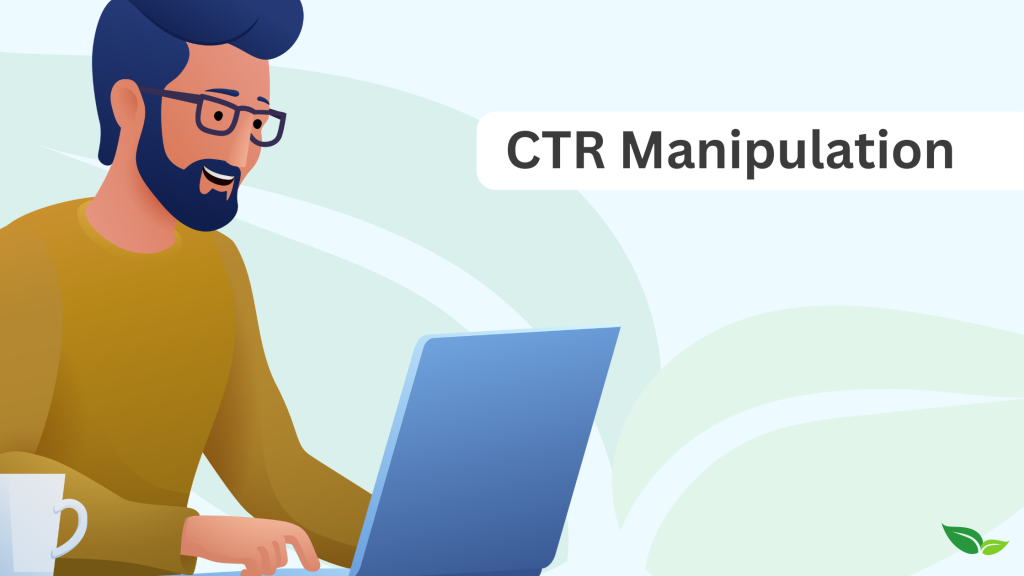CTR Adjustment: A Proven Technique for Better Clicks
The idea of click-through price (CTR) manipulation has garnered interest as a strategic method to enhancing electronic advertising end results. As we discover the ins and outs of efficient CTR techniques, one must consider: exactly how can online marketers stabilize the pursuit of greater clicks with the critical of preserving trust and reputation in their brand name?
Recognizing CTR Control
Although click-through price (CTR) manipulation can be a controversial subject, recognizing its systems is important for digital marketers and platform administrators alike. CTR is the ratio of customers who click a specific link to the complete number of customers that watch a email, page, or advertisement . A raised CTR shows effective content, while a reduced CTR may suggest that renovations are necessary.
Manipulation of CTR can take place with numerous ways, such as altering ad placements, enhancing headlines, or changing call-to-action language. These techniques can alter the viewed performance of projects, causing prospective misconceptions of individual interaction and behavior.
Furthermore, CTR control can affect algorithm-driven systems, as these platforms usually focus on material based upon involvement metrics. Consequently, blew up CTRs can misguide marketing experts into thinking that their approaches are producing favorable results, possibly wasting sources on inadequate campaigns.

Methods for Reliable Manipulation

One more method involves utilizing distinctive visuals. Integrating high-grade photos or videos can draw customers in, making them most likely to involve with the content. Furthermore, employing A/B screening allows marketing professionals to experiment with various variants of ad images, calls-to-action, and copy to establish which reverberates best with the target market.

Moral Factors To Consider in CTR Techniques
As marketing professionals discover different strategies to boost click-through prices (CTR), it is vital to consider the moral implications of these approaches. Ethical advertising and marketing techniques prioritize openness, sincerity, and respect for the target market, guaranteeing that users are not deceived by misleading methods that might generate temporary gains however eventually damage brand name reputation.
One major ethical worry occurs from the use of clickbait headings, which promise sensational content but supply minimal value. Such methods can wear down trust fund between brands and customers, causing frustration and disillusionment. Furthermore, utilizing deceptive images or controling data to produce a false narrative can misstate the real advantages of a service or product, increasing questions concerning honesty.
Tailoring content based on customer information can enhance involvement, but it needs to be done with user authorization and understanding. Striking a balance in between reliable CTR strategies and moral considerations is necessary for promoting lasting partnerships with customers.
Gauging the Impact of Changes
Determining the influence of changes in click-through rates (CTR) is critical for evaluating the effectiveness of advertising and marketing strategies. Precise dimension enables marketing experts to identify whether particular modifications generate desirable results. To successfully analyze these changes, it is vital to develop standard metrics before applying alterations. This includes accumulating data on CTR, conversion prices, and various other relevant efficiency signs.
As soon as modifications are made, marketing experts should employ A/B screening to contrast the efficiency of various strategies. This method enables for a controlled atmosphere where one variable is changed while others stay consistent, enabling a clearer understanding of the changes' effect on CTR. In addition, segmenting information by target market demographics or networks can provide insights into which sections respond positively to certain controls.
Routine analysis of these metrics post-implementation is necessary to track progress and recognize patterns. Using tools LinkDaddy CTR Manipulation such as Google Analytics and heat maps can boost this evaluation, supplying a detailed view of customer behavior. By consistently measuring the effect of modifications, businesses can make informed choices, maximizing their advertising and marketing initiatives for enhanced interaction and ultimately driving far better efficiency throughout campaigns.
Long-Term Benefits of CTR Adjustment
The lasting benefits of click-through price (CTR) control extend beyond immediate involvement metrics, cultivating sustained development and enhanced brand exposure. By tactically enhancing CTR, companies can grow a devoted audience base, as greater engagement usually translates to raised depend on and integrity. This count on can facilitate consumer retention, inevitably causing greater conversion rates with time.
Moreover, enhanced CTR signals to internet search engine and social systems that content is beneficial and appropriate, which can improve natural reach. As algorithms prioritize high-performing content, brand names that continually achieve raised CTRs are most likely to gain from enhanced presence in search engine result and recommended feeds.
In the context of digital marketing, a higher CTR can likewise cause lower customer purchase expenses. As projects become more efficient, organizations can assign sources much more effectively, optimizing return on investment.
Final Thought
In verdict, CTR control represents a useful strategy for boosting click-through prices through numerous strategies such as maximized headings and tailored web content. While the possibility for enhanced interaction is considerable, honest factors to consider need to assist these approaches to make certain depend on and integrity are maintained. By methodically measuring the effect of changes and focusing on lasting benefits, organizations can effectively leverage CTR adjustment to cultivate continual client loyalty and help with brand growth in a progressively competitive digital landscape.
The idea of click-through rate (CTR) manipulation has garnered interest as a strategic method to improving digital advertising end results.Although click-through rate (CTR) adjustment can be a controversial topic, recognizing its devices is crucial for electronic marketing experts and system managers alike. An elevated CTR shows reliable web content, while a reduced CTR may recommend that renovations are essential.
Using calculated methods for effective CTR adjustment can significantly boost customer interaction and campaign efficiency.In verdict, CTR manipulation stands for a useful technique for enhancing click-through prices through numerous techniques such as maximized headlines and tailored content.